Kogei: Traditional Arts and Crafts of Fukushima, Japan

Kogei (工芸) translates to traditional arts and crafts. Arts and crafts include disciplines such as ceramics, textiles, woodworking, lacquerware, papermaking, and other means of artistic expression that involve considerable understanding of traditional methods and techniques. Artisans hone their skills to create objects that are both practical and aesthetically pleasing. Kogei artists and their produced objects are valued for their rich history that reflect intangible cultural heritage spanning hundreds of years, as techniques and processes are passed down from generation to generation. A category of kogei is mingei, (民芸), which translates to “folk crafts,” and is formed from minshu (民衆), meaning common people, and kogei (工芸). Art critic and philosopher Soetsu Yanagi created this term and the mingei movement in the 1920/30s to distinguish the value of everyday items made for ordinary use for the common person.
The Kogei exhibition and programming are supported by the Japan Foundation New York through the U.S.-Japan Community Grassroots Exchange Program. Japan House is proud to highlight the traditional arts and crafts of Fukushima and feature the stories of Fukushima. In April 2025, Japan House will be hosting Seiran Chiba, Akie Hashimoto, and Ayako Hirai as visiting artists-in-residence for a series of workshops and programs for the University of Illinois and local community. In Fall 2025, Japan House will host Seiran Chiba, Shinya Terasawa, Masaji Hashimoto, and Hirohisa Saito as visiting artists-in-residence.
The image above features a calligraphy execution by Seiran Chiba that translates to "Traditional Crafts of Fukushima." The scroll itself is made of Aizu Momen (cotton) and Kamikawasaki Washi (paper) from Fukushima.
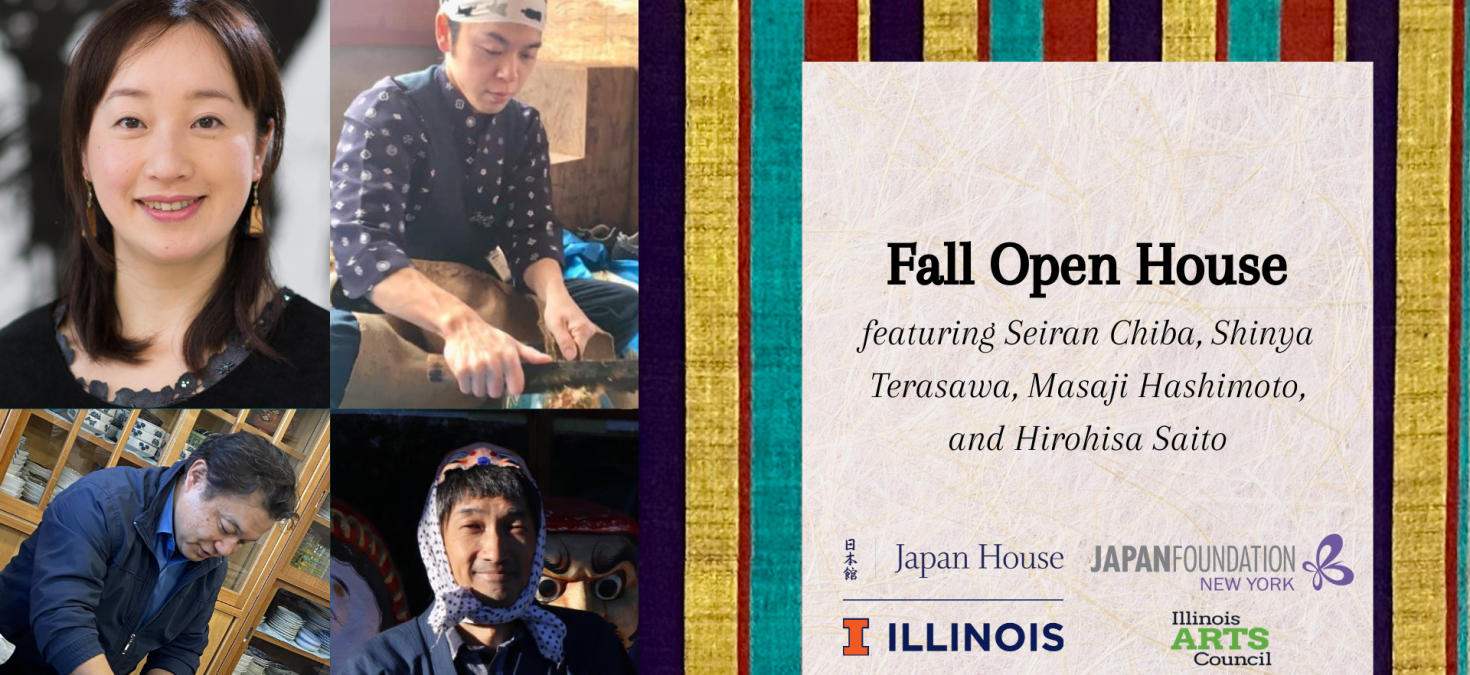
On Saturday, October 18 from 11am-4pm is Japan House's Fall Open House featuring four visiting artists from Fukushima: Seiran Chiba, Shinya Terasawa, Masaji Hashimoto, and Hirohisa Saito.
From 11am-3pm, the Fukushima artists will have their art pieces on display throughout Japan House for visitors to view an enjoy. Visitors will have the opportunity to purchase a select number of pieces to directly support the artists - cash or Paypal is accepted. At 3pm, there will be opening remarks from Japan House and the Fukushima Governor Masao Uchibori followed by the four artists giving a free presentation about their art, their history, and about their practices. There will be a Q&A to follow. The presentation is free, but donations are welcomed. Space is limited to the first 30 guests.
Traditional Japanese tea ceremonies will be offered by the Chado Urasenke Tankokai Urbana-Champaign Association at 11am, 11:30am, 12pm, 12:30pm, 1pm, 1:30pm, and 2pm. In addition to a bowl of freshly whisked matcha, we are pleased to share a variety of different wagashi from Fukushima. We are incredibly thankful to the Fukushima Governor's office for providing these special sweets!
October 25: Calligraphy Workshops at 2:30pm and 3:45pm

On Saturday, October 25, Seiran Chiba will teach two Japanese calligraphy (shodo) workshops. Guests will learn about the basics of Japanese calligraphy and practice writing with her guidance before creating their own masterpiece. All supplies are provided. Registration required.
October 25: Aizome (Indigo Dyeing) Workshops at 12pm and 1:15pm
On Sunday, October 19 and Saturday, October 25, learn to use katagami stencils to dye a fan with Fukushima artist Hirohisa Saito who specializes in the art of aizome, or indigo dyeing. Registration required.
October 19: Washi Japanese Paper Making Workshop
Learn about washi and create your own postcard with Fukushima artist Shinya Terasawa who specializes in the art of washi, or Japanese paper. Registration required.
October 19: Mame Daruma Hariko Workshop (Sold Out)
Make your own mame daruma with Fukushima artist Masaji Hashimoto who specializes in the art of hariko, or paper mache.
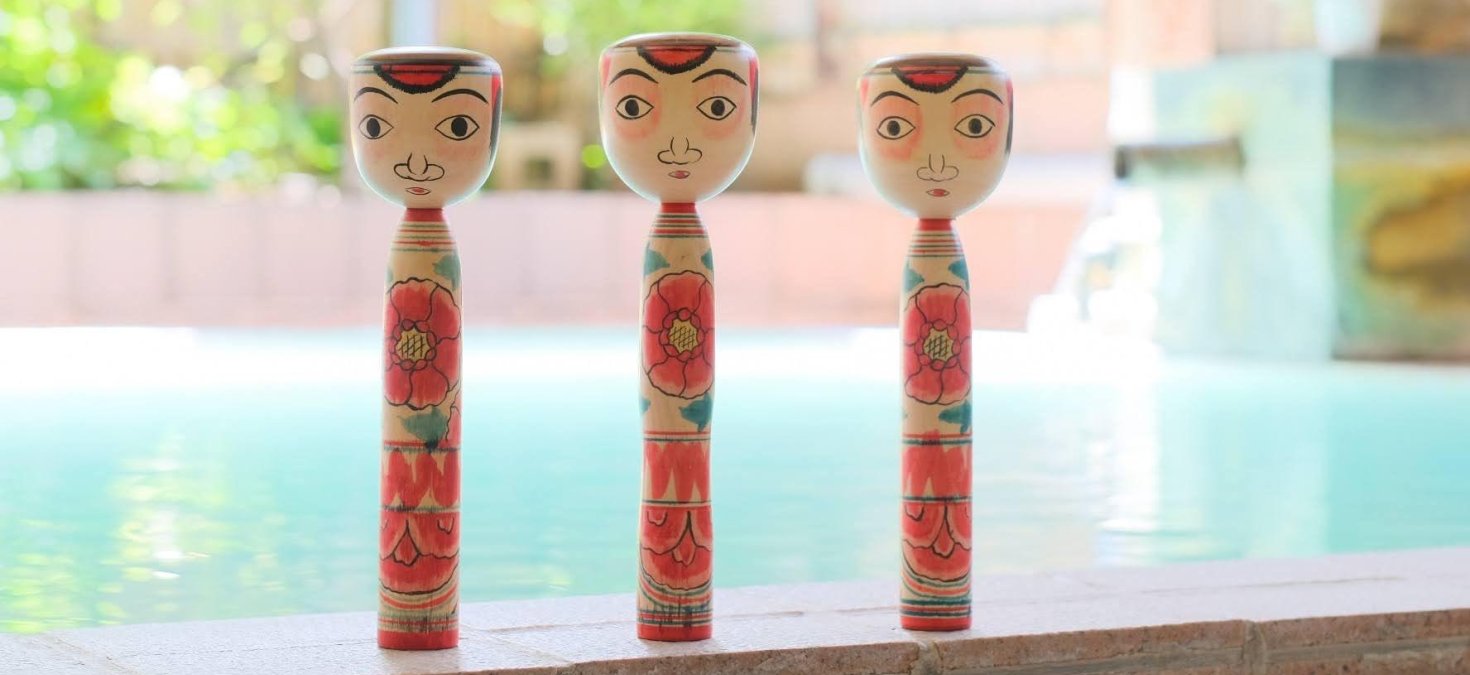
Featured above are kokeshi dolls from the Fukushima Kokeshi Craftsmen's Association. Please visit Spurlock Museum's exhibition for detailed information about each artist and their pieces displayed.
Japan House is proud to co-sponsor an exhibition with the Spurlock Museum of World Cultures to feature pieces made by the Fukushima artists and craftspeople. This exhibition will be on display from April through November 2025 on the 2nd Floor in the Asia Gallery, and it is free and open to the public. We express our gratitude to the Fukushima artists and craftspeople who have gifted the pieces to be displayed, to the Fukushima Prefectural Museum for providing descriptions on the history of traditional crafts in Fukushima, and to Japan House Intern Eungi Youn for translating them with edits by Diana Liao, Japan House Education and Engagement Specialist. Japan House and Spurlock Museum acknowledge support from the Illinois Arts Council.
Seiran Chiba is a world-renowned Japanese shodo (calligraphy) artist from Fukushima. Originally born in Tokyo, she is now a Cultural Ambassador for the Fukushima Tourism Exchange. She is active as a traveling calligrapher, embarking on journeys such as the ‘Calligraphy Tour of All 59 Municipalities in Fukushima Prefecture’ and the ‘Japanese Calligraphy Journey.’ Since 2013, she has been conducting large-scale calligraphy demonstrations and workshops at overseas educational institutions. In 2020, she provided calligraphy for the 2020 Tokyo Olympic commemorative monument, and in 2024, she won the Minister of Education, Culture, Sports, Science, and Technology Award at the 2024 National Open Calligraphy Exhibition.
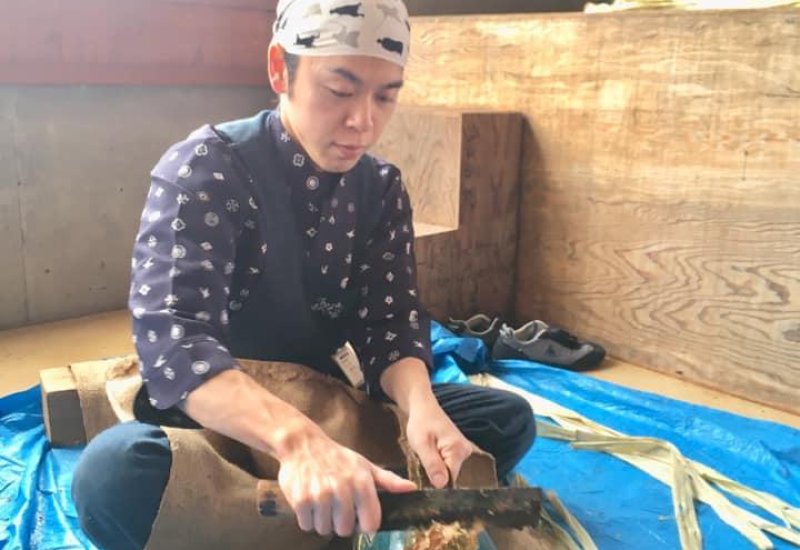
Shinya Terasawa is a washi paper craftsman based in the Kamikawasaki Washi (Traditional Japanese Paper) Folklore Museum. The Kamikawasaki area of Nihonmatsu City is a production area of handmade washi paper with a history of about 1,000 years, and this facility was built in 2001 with the aim of passing on and preserving Kamikawasaki washi paper. He operates the workshop within the museum where visitors can observe the washi paper-making process and experience making washi paper. In 2021, he launched a project called Washito, dedicated to the promotion of Kamikawasaki washi.
Masaji Hashimoto is an 18th generation artisan of Hashimoto Hiroji Mingei located in Takashiba Craft Village in Koriyama City, Fukushima. Takashiba Craft Village has 300 years of history of hariko. Many artisans continue to handcraft hariko dolls there, and visitors can observe the production process up close. He is also a successor of the Hyottoko Odori, one of the dances along with Shichifukujin Odori, designated as Important Intangible Folk Cultural Properties of Koriyama City.

Hirohisa Saito is a printmaker and aizome (Japanese indigo dyeing) artist with nearly 40 years of experience in the field. He graduated from Nihon University College of Art in 1981 and completed additional studies at Nihon University College of Art's Art Research Institute in 1983. In 1985, he established Saito Graphic Arts. Saito spent two years in Los Angeles from 1989 as an Overseas Research Fellow for the Agency for Cultural Affairs to study screen printing. His works have been featured in solo exhibitions at various galleries and received various awards. As an educator, he is a part-time lecturer at Koriyama Women's University and a part-time lecturer at Tokyo University of the Arts. He is a Member of the Saitama Prefecture Art Association, Vice President of the Saitama Prefecture Printmakers’ Association, and Auditor of the Fukushima Watercolor Painting Association.
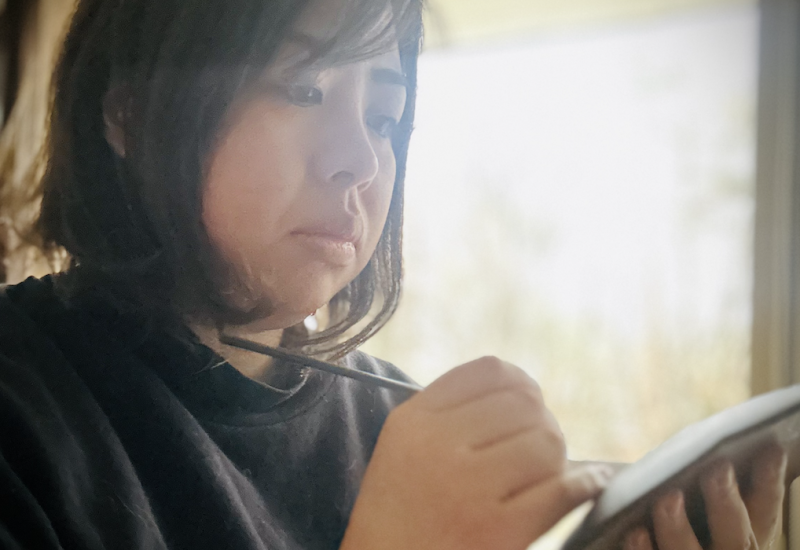
Ayako Hirai is a lacquer craftswoman and kintsugi specialist. She was born in Fukushima, and she completed her degree in Art and Culture of Lacquer Crafting at Tohoku University of Art & Design in 2013. She worked in an antique furniture repair shop after graduation with her deep knowledge of wood. In 2016, she and her husband, Gaku Hirai, started their independent studio in Inawashiro Town. Gaku Hirai also graduated from Tohoku University of Art & Design in 2011, with a degree in Lacquer Crafting. Working together, Gaku uses traditional methods to extract and refine urushi from lacquer trees while Ayako chooses the material and design of their lacquerware. They value the harmony between wood and lacquer, using traditional techniques to create lacquerware that fits into modern life.

Akie Hashimoto studied the manufacturing and processing of washi (traditional Japanese paper) at the Kyoto Dento Kogei College. After working as a washi artisan for 6 years, she went to Australia on a working holiday for two years. After returning to Japan, she began producing Miharu Hariko at her family’s folk craft business, Hashimoto Hiroji Mingei. In 2018, she conceptualized and crafted Tsurushi-bina Hariko, hanging strands of dolls made with hariko, which she now exhibits every spring. In addition to the traditional miharu hariko style, she also creates new pieces incorporating elements such as dots and pastel colors.
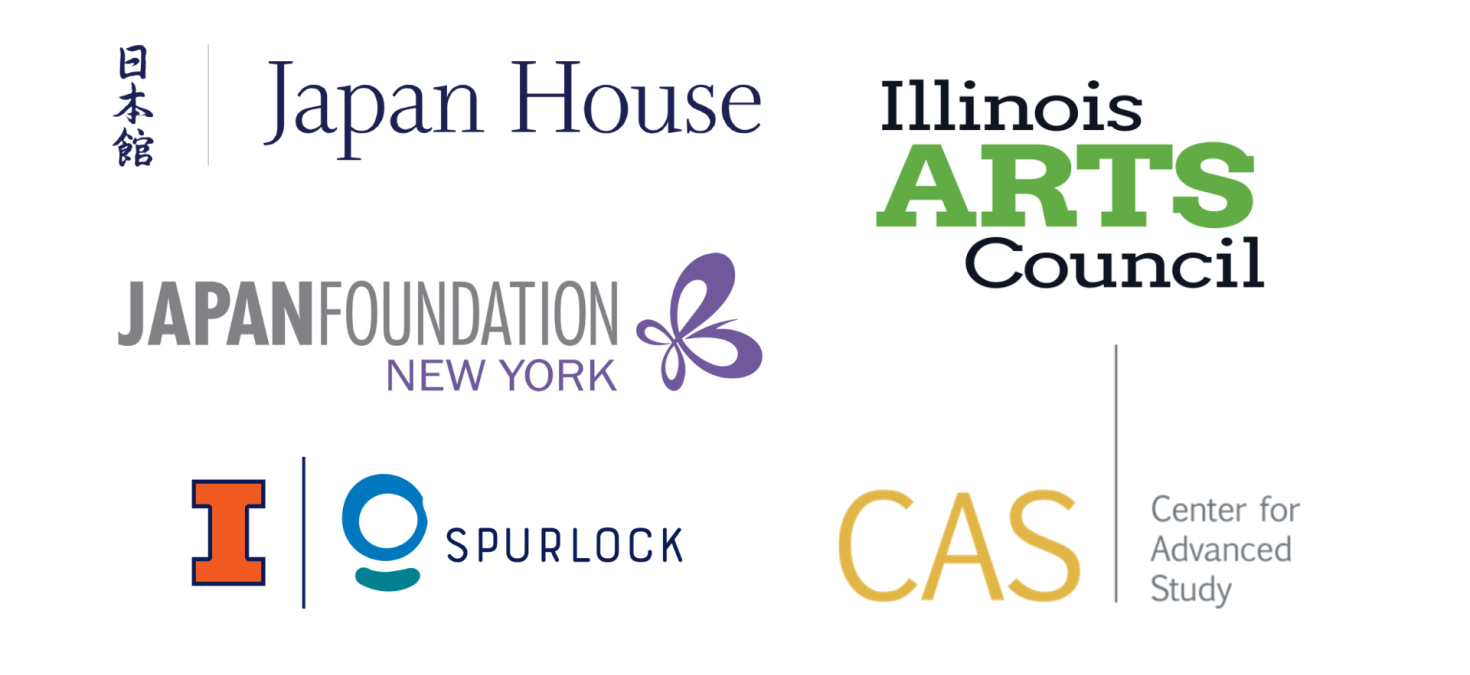
Japan House is deeply appreciative of the partnerships and support of various organizations and grant funding that made this project possible. We also thank the teachers of Urbana-Champaign for welcoming the artists into their classrooms!
On Saturday, April 19 at Spurlock Museum, there was an Exhibition Opening, Performance, and Artist Meet & Greet from 1-4pm. At 1pm, there was an opening performance and keynote lecture titled, Stories of Fukushima: The Journey of Seiran Chiba, with musical accompaniment by Ho Etsu Taiko in the Knight Auditorium. Japan House thanks the Center for Advanced Study for supporting Ms. Chiba's opening event through the George A. Miller Visiting Artist Program. Following the performance, there will be a reception and artist meet and greet from 2-4pm in the Charles M. and Barbara. S. Hundley Central Core Gallery. Japan House thanks Spurlock Museum for co-sponsoring this event.